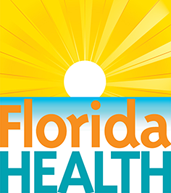It's a New Day in Public Health.
The Florida Department of Health works to protect, promote, and improve the health of all people in Florida through integrated state, county, and community efforts.
Older Adult Falls Prevention
Contact the Violence and Injury Prevention Section
Unintentional falls are the leading cause of fatal and non-fatal injuries among Florida residents ages 65 years and older. In 2024, 4,046 older adults ages 65+ were fatally injured in a fall. In addition to deaths and injuries, as well as the costs associated with them, falls can have many negative consequences for older adults, including:
- Fear of falling again
- Forced relocation from the home
- Loss of independence
- Stress in the family
By reducing their chance of a fall, older adults can stay independent and have an increased quality of life.
For direct links on Aging In Florida Dashboard that focuses on the population aged 65 and over, go to Aging In Florida Dashboard - Overview | CHARTS. It provides data to assess needs and progress toward making Florida's communities more age-friendly.
Preventing Falls Among Older Adults
There are many reasons why an older adult might fall, including a variety of biological, behavioral, and environmental factors. Older adults who have one or more of these conditions may have a higher risk of falling. These risk factors include:
- A previous fall
- Chronic health conditions (e.g., arthritis, stroke)
- Conditions in the home (e.g., slippery floors, loose rugs, cords on the floor, poor lighting)
- Fear of falling
- Medicines (including interaction effects)
- Mobility problems (e.g., muscle weakness, balance)
- Poor nutrition (leading to weakness, dizziness, fainting)
- Poor vision or hearing
4 Things YOU Can Do to Prevent Falls
The following practices are recommended for older adults to reduce their chances of falling and help them stay independent:
- Exercising regularly (especially leg strengthening and improving balance).
- Reviewing their medicines with a doctor or pharmacist.
- Having an eye doctor check their vision at least once a year.
- Make your home safer. Remove throw rugs and clutter that might cause you to trip. Add grab bars in your bathroom and railings on your stairways. Use brighter light bulbs to improve the lighting in your home.
Preventing Falls at Home: Room by Room | National Institute on Aging.
Interventions
There are evidence-based interventions for older adults, including programs designed specifically to prevent falls. The Centers for Disease Control and Prevention (CDC) has resources available for providers interested in these interventions, including a Falls Compendium of evidence based fall interventions and a guide on developing community based falls prevention programs. The National Council on Aging (NCOA) also has information about evidence based programs. A few of the interventions being conducted in Florida include:
- A Matter of Balance - designed to reduce the fear of falling and improve activity levels among community-dwelling older adults
- Otago Exercise Program (OEP) - consists of 17 strength and balance exercises and a walking program.
- Stepping On - is a one-of-a-kind multifactorial approach that focuses on four critical domains: balance and strength exercises; medication review; vision review; and home modifications.
- Tai JiQuan: Moving for Better Balance (previously known as Tai Chi: Moving for Better Balance) - consists of an 8-form core with built-in practice variations and a subroutine of Tai Ji Quan.
Older adults interested in participating in a community based program should contact their local Aging and Disability Resource Center.



Connect with DOH